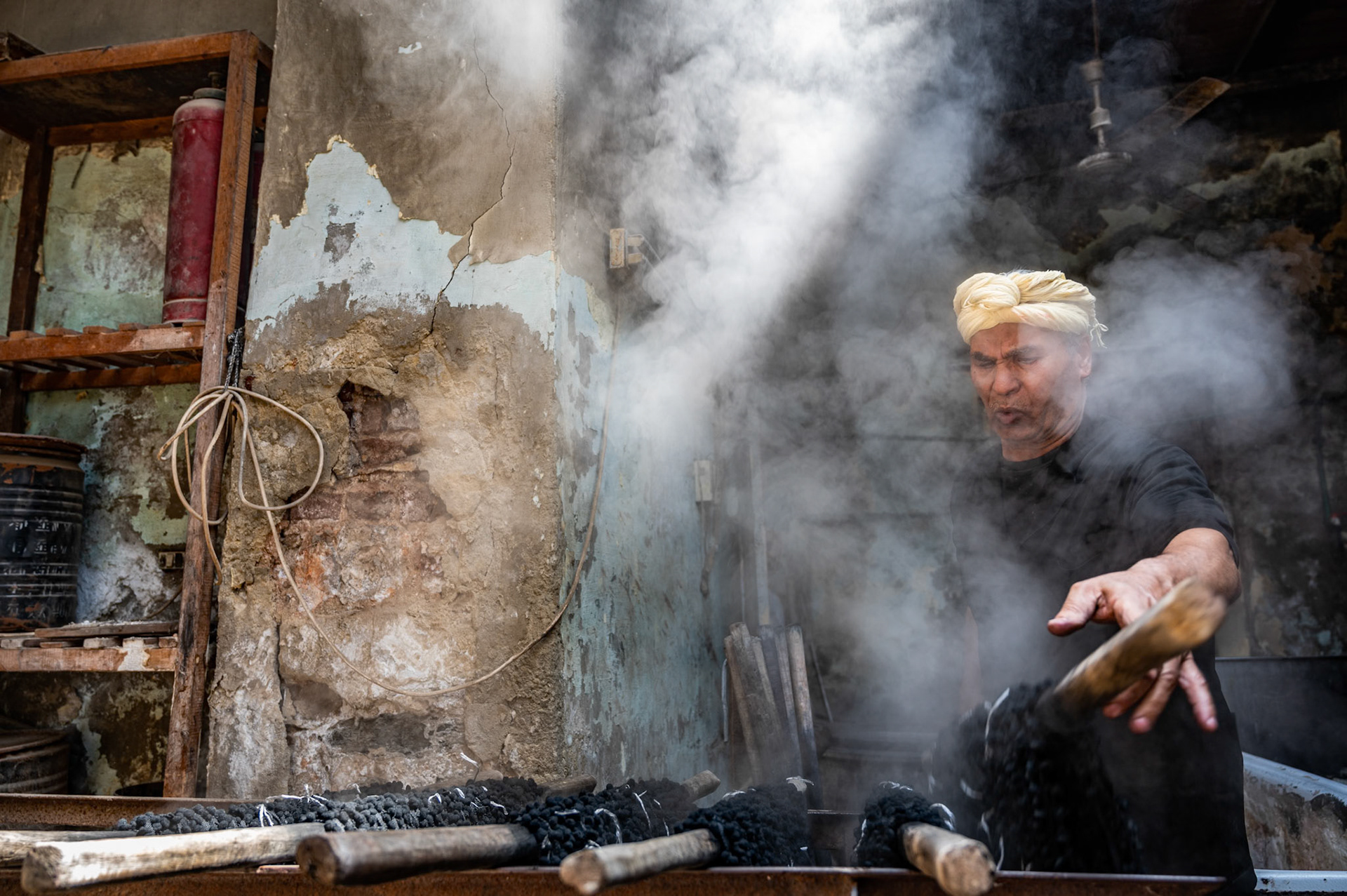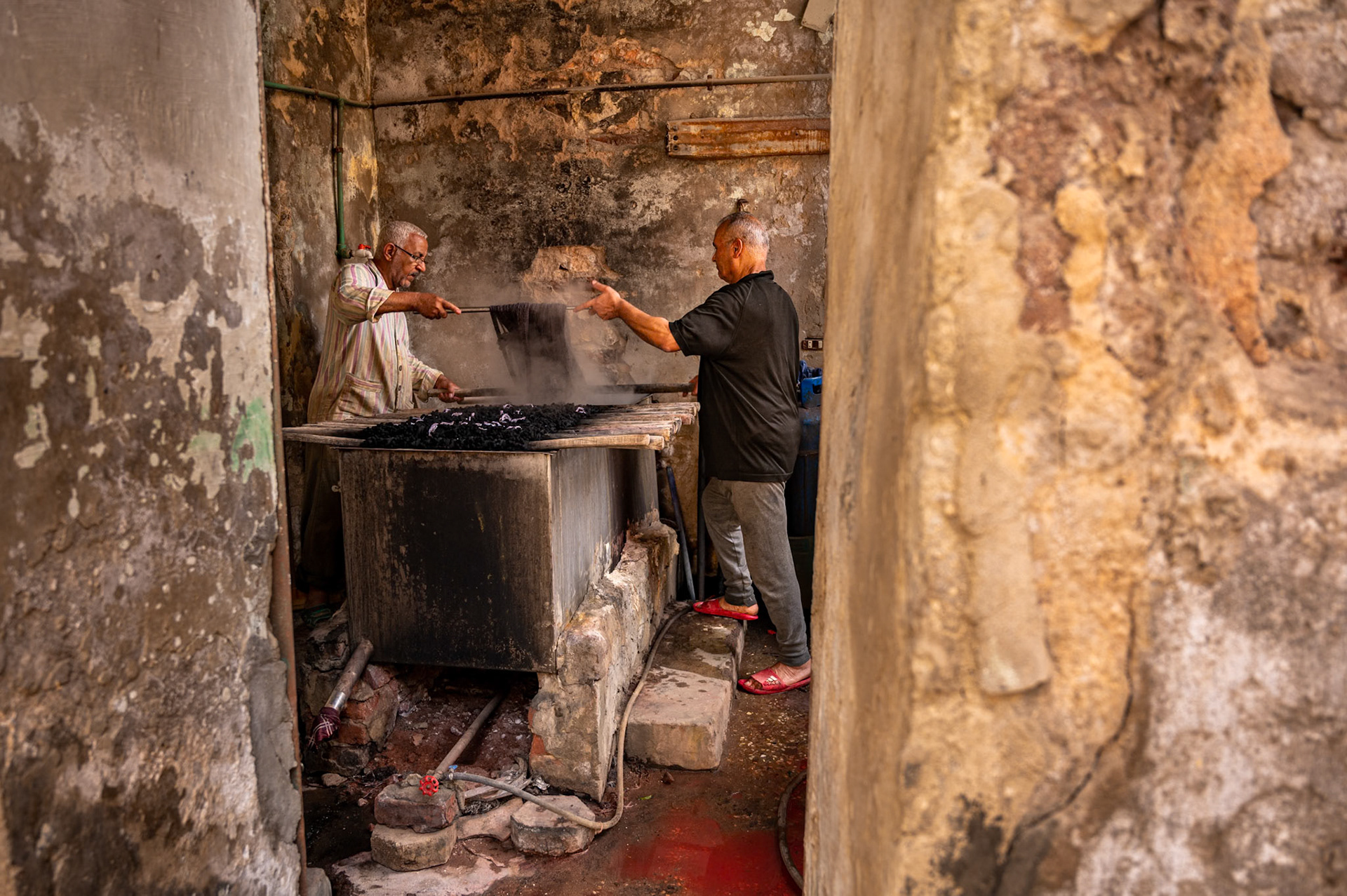







Am Rabie and the art of dyeing threads Uncle Rabie received us in his Yarn dyeing facility, which is considered one of the oldest yarn dyers, in Al-Qarabiya neighborhood in Al-Darb Al-Ahmar area in the heart of Cairo, with all graciousness and generosity. The dyeing facility was established in the twenties of the last century, and Uncle Rabie worked in it for more than fifty years. Rabie's uncle inherited the dyeing craft from his uncle, who inherited it from his father. The process of dyeing yarn is a traditional, manual method for coloring yarn, dating back to the time of the Pharaohs. Uncle Rabie's mastery lies not only in his technical prowess, but also in his intuitive understanding of color and its interactions through meticulous attention to detail, color blending, and texture treatment. Manual dyeing is the coloring of cotton, silk or wool yarns and threads. The colored dye is mixed with water in hot tubs, and the yarns are prepared in bundles that are placed on wooden sticks, then stirred in hot water several times. The process ends with cooling and drying in the sun. The craft is in extinction, as the craft of manual dyeing is gradually disappearing. One of the reasons for the extinction of the craft is technology and mechanization, and there are also other reasons such as lack of demand and the import of colored threads, in addition to the reluctance of craftsmen from the profession. The dyeing craft is distinguished from the machines by the craftsmen’s ability to dye the yarns in multiple, gradual colors, so one thread is dyed in several overlapping colors







